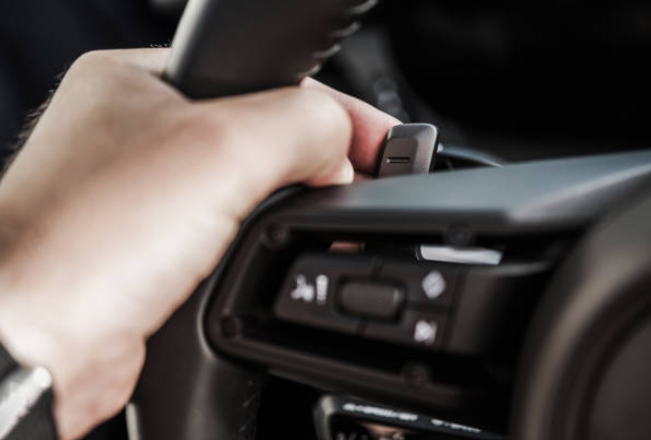Exploring Run-Flat Tires: Are They Good Enough?
Well, you might think about run-flat tires after reading the name. These unusual tires have benefits and drawbacks. The main benefit is that they make it possible for drivers to safely and pleasantly go a short distance after puncturing.
Widely available at retail as replacement tires, run-flats are a common sight on several autos. However, the cost of them is higher than that of any other modern safety equipment.
We will examine the benefits and limitations of run-flat tires, their price, and their operation in this post.

Run-Flat Tires: What Are They?
The incredibly rigid sidewall of run-flat tires is a result of their unique manufacturing. When the tire loses air, the sidewall can still sustain the weight of the car at near-highway speeds.
What sets run-flat tires apart from regular tires?
A punctured standard tire will go flat. If you drive it farther than it takes to pull off the road, you virtually instantly risk damaging a wheel.


The product's main selling point is that drivers can travel a few miles, if not more, after getting a flat tire. You can change the tire or install a spare once you have arrived at a safe location. The distance you can travel on a run-flat tire devoid of air depends on the tire type and manufacturer. They can often travel 50 miles at a speed of 50 mph.
On some models, some automakers install these tires as standard equipment. When it is time to replace them, consumers frequently have to decide between keeping run-flat tires or going with normal tires because of factors like age, damage, or damaged tread.
There are two primary configurations of run-flat tires designed to keep the wheel elevated from the ground in the event of a standard puncture or air loss.
Self-Supporting Sidewall System
The most prevalent design is the self-supporting sidewall system, characterized by reinforced construction using durable rubber that maintains its shape following a tire puncture. Various manufacturers produce self-supporting run-flat tires with significantly thicker sidewalls. While these tires allow for short-distance driving due to their robust sidewalls, they are not considered completely "airless" tires. Although such designs have been tested, they have not yet been implemented in regular production vehicles.
Supporting Ring System
Less common is the supporting ring system, which utilizes a central ring made of hardened rubber to support the vehicle during instances of air loss. While few mainstream vehicles incorporate this type of tire, it is sometimes found in heavy-duty or military-oriented vehicles.
The Role of Tire Pressure Monitoring Systems
Tire pressure monitoring systems (TPMS) play a crucial role in conjunction with run-flat tires. These systems provide warnings about low tire pressure via a display on the vehicle's instrument cluster. The federal government mandated TPMS on passenger cars in late 2007, leading automakers to either install a basic warning system with a single indicator light or offer more advanced systems that display individual tire pressures.

Typically, enhanced safety features come with a higher price tag. However, there are additional factors contributing to the increased cost compared to standard tires.
Run-flat tires are less prevalent on the market compared to their standard counterparts, resulting in fewer purchasing options. Moreover, most vehicles are equipped with brand new standard tires from the factory, leading to lower demand for tires capable of sustaining themselves for short distances. Consequently, consumers are more inclined to replace their tires with similar types.
Furthermore, run-flat tires require more rubber in their construction, leading to higher material costs for tire manufacturers.

Price Comparison with Standard Tires
Run-flat tires can cost up to twice as much as comparable traditional tires. For instance, a well-known company called Tire Rack presently has a range of Bridgestone run-flat tires that fit a 2016 BMW 328i, costing between $205 and $273. On the other hand, the shop lists various Bridgestone non-run-flat tires for the identical BMW model, with prices ranging from $181 to $207.
Convenience: Run-flat tires offer unparalleled convenience. Despite the improved durability of modern tires compared to those of the past, a simple encounter with a metal strip or a long nail can still lead to significant inconvenience.
Safety: With run-flat tires, drivers have the potential to continue their journey uninterrupted or at least reach a service center capable of addressing the puncture. In contrast, drivers with conventional flat tires are often compelled to pull over immediately, potentially on the shoulder of a busy highway.
Smooth Ride Even When Deflated: By preserving the primary structure, or "carcass," of the tire, run-flat tires minimize handling and ride quality compromises following a puncture. In contrast, conventional tires undergo significant handling changes, especially when punctured, causing the tread to rub against the metal wheel.
Elimination of Spare Tire: Vehicles equipped with run-flat tires from the factory are devoid of a spare tire, resulting in reduced vehicle weight and increased cargo space.
Cost of Replacement: One of the primary drawbacks that drivers consider when opting for run-flat tires is the high cost of replacement. However, the robust sidewalls responsible for their performance have a significant impact on the comfort of the ride.
Firmer Ride: Run-flat tires are known for their stiffer ride, which may be surprising to drivers accustomed to a smoother driving experience. Additionally, their unique tread patterns can result in reduced tire lifespan and an increased need for repairs.
Not Completely Invulnerable: Despite their durability, run-flat tires are not entirely immune to damage. A severe impact, such as encountering large debris, can cause enough harm to render them unsafe for continued use, similar to the effect on standard tires. In such cases, the absence of a spare tire in vehicles equipped with run-flats necessitates the assistance of a tow truck.
Challenges in Replacement: Replacing run-flat tires is not always a straightforward process. Tire shops may not consistently stock them, leading to potential delays for drivers in smaller communities or rural areas waiting for replacements to arrive from warehouses.

Proper maintenance is essential for maximizing the lifespan and performance of run-flat tires. This includes regular inspections for signs of wear or damage, as well as ensuring that tire pressure is properly maintained according to the manufacturer's recommendations. In the event of a puncture, it's crucial to follow the manufacturer's guidelines for driving on run-flat tires and to have them inspected, repaired, or replaced by a qualified technician as soon as possible.
Can a run-flat tire be fixed by putting a plug in?
Tire manufacturers typically advise against plugging in a run-flat tire in order to repair it because of the unique tread and rubber composition of these tires.
How far can you go on a run-flat tire before it becomes unsafe?
Depending on the tire model, different driving distances can be safely covered by run-flat tires. Tire manufacturers usually claim that their products can safely transport drivers for 25 to 150 kilometers. Once the tire loses air pressure, nevertheless, it is best to inspect it right away.
How long is a run-flat tire usable for?
Run-flat tire longevity is influenced by a number of variables, including the type of tire and its initial treadwear rating. But often speaking, run-flat tires do not provide the same longer tread life as regular tires.
Drivers may drive safely after a puncture without having to change their tires right away, thanks to run-flat tires, which have indisputable safety and convenience benefits. They do have certain disadvantages, though, like a lower range, certain problems with riding comfort, and increased initial and ongoing costs. In the end, a driver's unique needs, driving style, and priorities will determine whether or not run-flat tires are worthwhile. The performance and dependability of run-flat tires should continue to improve as technology advances, thereby changing the course of automobile safety and mobility in the future.
Click on the following link to read another blog post: What Happens When You Put Regular Gas In A Premium Car?














